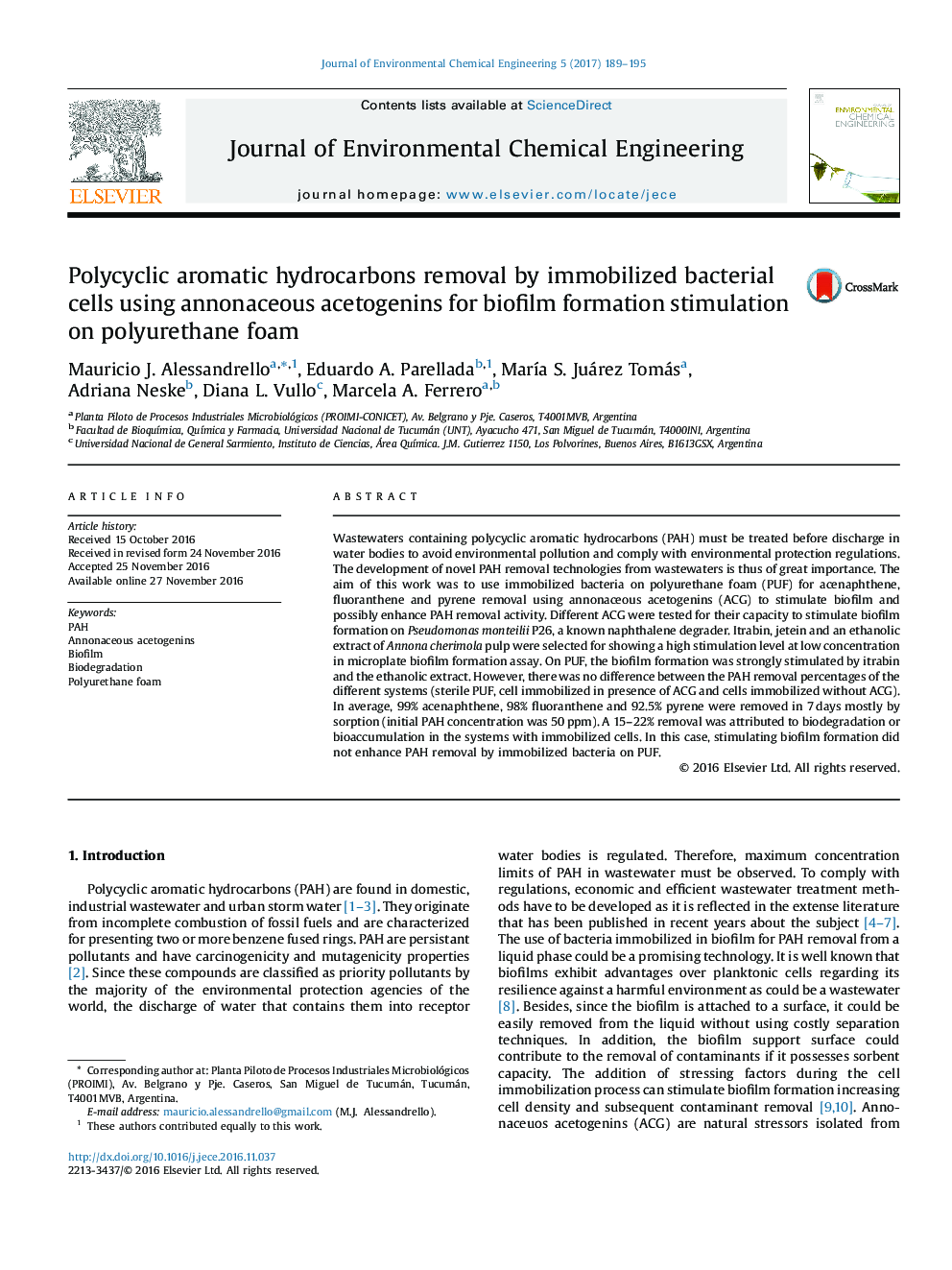| کد مقاله | کد نشریه | سال انتشار | مقاله انگلیسی | نسخه تمام متن |
|---|---|---|---|---|
| 6477305 | 1362584 | 2017 | 7 صفحه PDF | دانلود رایگان |
- Biofilm formation on polyurethane foam was stimulated by annonaceous acetogenins.
- Almost 100% PAH removal was obtained with the different treatments assayed.
- PAH removal was achieved mostly by sorption phenomena.
- PAH bioremoval was about 20%.
- Biofilm formation stimulation did not correlate with improved PAH bioremoval.
Wastewaters containing polycyclic aromatic hydrocarbons (PAH) must be treated before discharge in water bodies to avoid environmental pollution and comply with environmental protection regulations. The development of novel PAH removal technologies from wastewaters is thus of great importance. The aim of this work was to use immobilized bacteria on polyurethane foam (PUF) for acenaphthene, fluoranthene and pyrene removal using annonaceous acetogenins (ACG) to stimulate biofilm and possibly enhance PAH removal activity. Different ACG were tested for their capacity to stimulate biofilm formation on Pseudomonas monteilii P26, a known naphthalene degrader. Itrabin, jetein and an ethanolic extract of Annona cherimola pulp were selected for showing a high stimulation level at low concentration in microplate biofilm formation assay. On PUF, the biofilm formation was strongly stimulated by itrabin and the ethanolic extract. However, there was no difference between the PAH removal percentages of the different systems (sterile PUF, cell immobilized in presence of ACG and cells immobilized without ACG). In average, 99% acenaphthene, 98% fluoranthene and 92.5% pyrene were removed in 7Â days mostly by sorption (initial PAH concentration was 50Â ppm). A 15-22% removal was attributed to biodegradation or bioaccumulation in the systems with immobilized cells. In this case, stimulating biofilm formation did not enhance PAH removal by immobilized bacteria on PUF.
91
Journal: Journal of Environmental Chemical Engineering - Volume 5, Issue 1, February 2017, Pages 189-195
